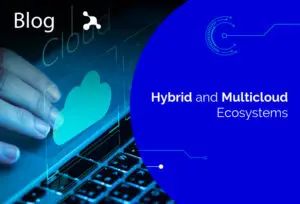In the world of business, companies often look for ways to optimize their operations and resources. Two popular approaches that businesses often turn to are outsourcing and outstaffing. While these terms may sound similar, they actually entail different strategies and have varying impacts on a business’s operations. In this blog post, we will delve into the distinctions between outsourcing and outstaffing, helping you understand which approach may be best suited for your business needs.
Understanding the Fundamentals of Outsourcing
Outsourcing is a strategic maneuver employed by businesses aiming to streamline their operations and focus on their core strengths. At its essence, outsourcing entails contracting out specific tasks or functions to external entities specialized in those areas. This could range from IT services and customer support to manufacturing and beyond. The underpinning idea is to tap into the expertise and capabilities of these third-party providers, enabling the original company to bolster its operational efficiency and productivity.
The allure of outsourcing lies in its potential to significantly reduce costs. By leveraging the specialized skills and economies of scale offered by external providers, businesses can often secure services at a lower cost than if those services were to be developed in-house. Moreover, outsourcing opens the door to a global talent pool, allowing companies to access skills and knowledge that may be scarce or too costly within their local market.
What distinguishes outsourcing further is its project-based nature. Companies may opt for outsourcing to tackle specific projects or to address particular needs that arise, without the commitment of long-term employment contracts. This flexibility is particularly advantageous for projects with clear deliverables and timelines, allowing businesses to scale up or down based on project requirements without the ongoing overhead of a full-time workforce.
In essence, outsourcing serves as a catalyst for companies to enhance their focus on their primary competencies, while entrusting specialized tasks to those who can perform them more efficiently, effectively, and economically.
Diving Into the World of Outstaffing
Outstaffing represents a nuanced approach to extending a company’s capabilities, where a business partners with an agency to employ remote staff who work under the direct supervision of the hiring company. This model is particularly appealing for organizations striving to augment their team with specific skills or to accommodate rapid growth without
the conventional burdens of recruitment and employment. Unlike outsourcing, where the focus is on delegating tasks, outstaffing is about enhancing the existing workforce with remote professionals who, despite their geographical distance, become an integral part of the team.
The relationship fostered through outstaffing is characterized by a unique blend of flexibility and control. Companies gain the agility to scale their operations up or down, responding adeptly to market demands or project timelines, while maintaining a tight grip on the quality and direction of the work. This control extends to the day-to-day management of the staff, ensuring that the remote employees align with the company’s culture, processes, and objectives.
Furthermore, outstaffing addresses a critical need for specialized talent by providing access to a global talent pool. This is particularly valuable in fields where local talent may be scarce, costly, or both. By engaging with remote professionals through outstaffing, companies can harness specialized skills and innovative perspectives, driving forward their projects and initiatives with newfound efficiency and effectiveness.
In essence, outstaffing empowers businesses to strategically expand their workforce, blending the benefits of external talent acquisition with the continuity and control of inhouse employment. This approach is tailored for organizations that prioritize retaining oversight of their projects while leveraging the advantages of a flexible, global workforce.
Key Differences Between Outsourcing and Outstaffing
- Nature of Control and Operational Integration:
Outsourcing: In outsourcing, a contractor is entrusted with specific tasks or projects, operating autonomously with minimal oversight from the hiring company. This model allows the client to focus on broader business strategies while the service provider handles execution.
Outstaffing: Outstaffing involves integrating external staff directly into the client’s daily operations. The client maintains control and oversight, managing remote employees as if they were part of the in-house team.
- Level of Involvement:
Outsourcing: The client’s involvement is primarily strategic, focusing on defining project outcomes and broader business goals. Day-to-day management is delegated to the service provider.
Outstaffing: Clients have a hands-on approach, actively managing and integrating remote employees into their organizational culture and workflow. This fosters a collaborative environment akin to having in-house team members.
- Structural Commitment:
Outsourcing: Typically project-based, outsourcing engagements are transactional in nature, focusing on specific tasks or outcomes within a defined time frame.
Outstaffing: Outstaffing entails a long-term partnership model where dedicated remote employees become integral to ongoing operations, providing continuity and stability to the client’s workforce.
- Purpose and Focus:
Outsourcing: Ideal for achieving project-specific outcomes or filling distinct operational gaps without involving the client in day-to-day management intricacies.
Outstaffing: Suited for companies seeking to extend their workforce seamlessly, integrating remote staff into daily operations to enhance productivity and flexibility.
- Operational Ethos and Strategic Needs:
Outsourcing: Businesses need to evaluate whether they require specialized skills for specific projects and prefer a hands-off approach to execution.
Outstaffing: Companies must assess their readiness to manage remote employees directly and prioritize integration into their organizational culture for long-term success.
Determining the Right Approach for Your Business:
- Assess Current Challenges and Goals:
Identify specific challenges or goals your business is facing. Determine whether you need to streamline operations by outsourcing tasks or expand your team’s capacity through outstaffing.
- Evaluate Core Competencies:
Determine if you want to focus more on your core competencies by outsourcing tasks to experts in those fields or if you prefer to maintain tight control over project direction and company culture through outstaffing.
- Consider Industry Dynamics and Talent Availability:
Assess the dynamics of your industry and the availability of talent locally versus globally. Evaluate whether outstaffing can bridge talent shortages by connecting you with a global pool of professionals ready to integrate into your projects.
- Analyze Operational Structure and Long-Term Goals:
Conduct a thorough analysis of your business’s operational structure, project management practices, and long-term strategic goals. Ensure your decision aligns with immediate needs and positions your company for sustainable growth and adaptability.
Asesoftware stands out as the ideal outstaffing partner, offering tailored solutions to extend businesses’ capabilities seamlessly. We ensure collaboration, maintain oversight, and align with strategic objectives by integrating remote professionals directly into clients’ operations. With a focus on long-term partnerships and mitigating talent scarcity, Asesoftware empowers businesses to thrive in a competitive landscape, leveraging the benefits of a flexible, global workforce.




